Let’s start simple. Do you want to increase website traffic?

BAM! Yes you do. The question was rhetorical.
The tips below are field tested and have stood the test of time (and Google’s algorithm updates).
So let’s do this.
1. Make your blog and website truly search engine optimized
This is the first step that you should take to make your website more Google friendly. There are 3 ways parts to this:
- On-page SEO
- Off-page SEO
- On-Site SEO
SEO experts recommend that you should always begin with On-Site SEO because its effects are site wide. You can start this process by making your site index-able as well as crawl-able by Google bots. In the image below you’ll see how Google perceives a website differently from human beings –
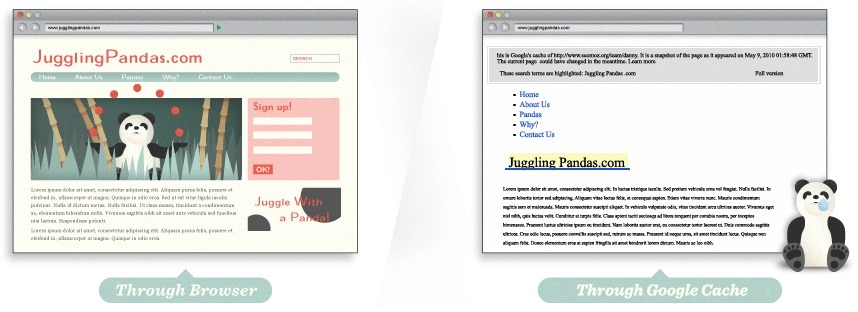
The folks over at Moz have written a complete resource on SEO design which you should totally check out.
After the recent 21st April update, Google now gives higher credibility to websites which have a responsive design (take the Mobile-Friendly Test by Google).
Google also rewards websites that have a less loading time (take the PageSpeed Test by Google).
Tag your images properly so that they can be easily picked up by the Google web spiders which are responsible to make sense out of each page element and attribute them to their parent keyword/tag. In order to add alt text to you images, just include alt=“lorem ipsum” into the img source code. For e.g.,
<img src="becauseimhappy.jpg" alt="Because I'm Happy" />
And if you’re using WordPress then the process gets a little simpler when you’re adding media to your post:
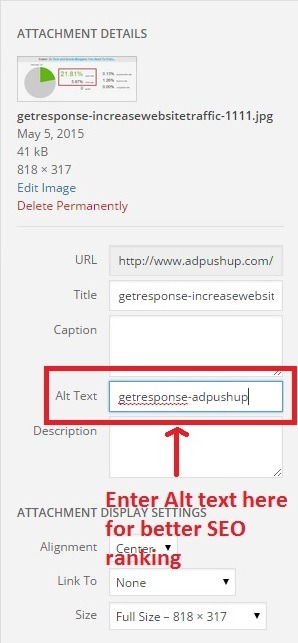
Along with this, help Google help you by indexing your content with the Fetch as Google Tool. John E Lincoln, Founder and President of SEO and Social Media at Ignite Visibility, explains just how to do that like an SEO Samurai in his article over at SearchEngineLand.
2. Write valuable content around keywords
If you are a new site, it can be difficult to go after popular keywords right away. I find it better to write many quality articles on very specific keywords than to go after the ones with more search traffic. A great benefit of staying focused with long-tail key terms is that they usually convert better, as well.
— Lawrence Watkins, Great Black Speakers (via Mashable)
There is no rocket science to what valuable content is. A valuable content can be easily surmised as:
- Helps in solving a pain point
- Is exactly what a user was looking for
- Delivers what it promises (the headline should not be misleading)
- Is presented in a way that makes it understandable (it should be readable and not so full of jargon that only a select few can understand it)
- Is not used as an instrument to misinform or exploit the user
This is NOT valuable content:
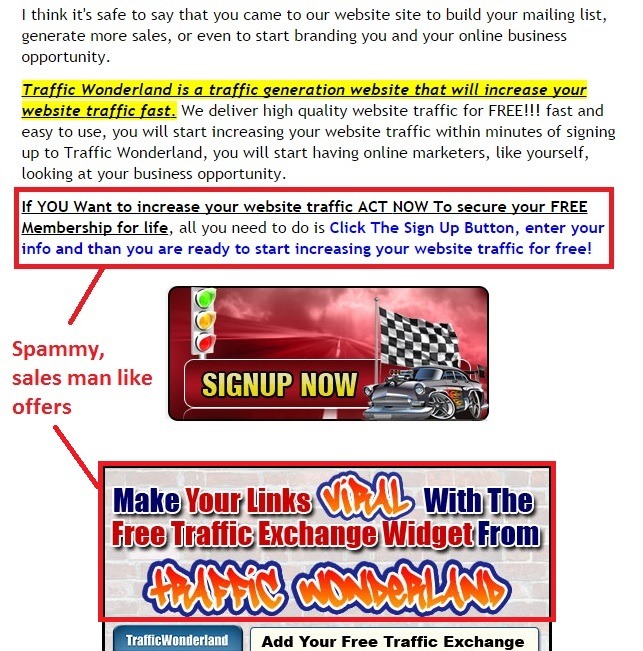
This is valuable content:
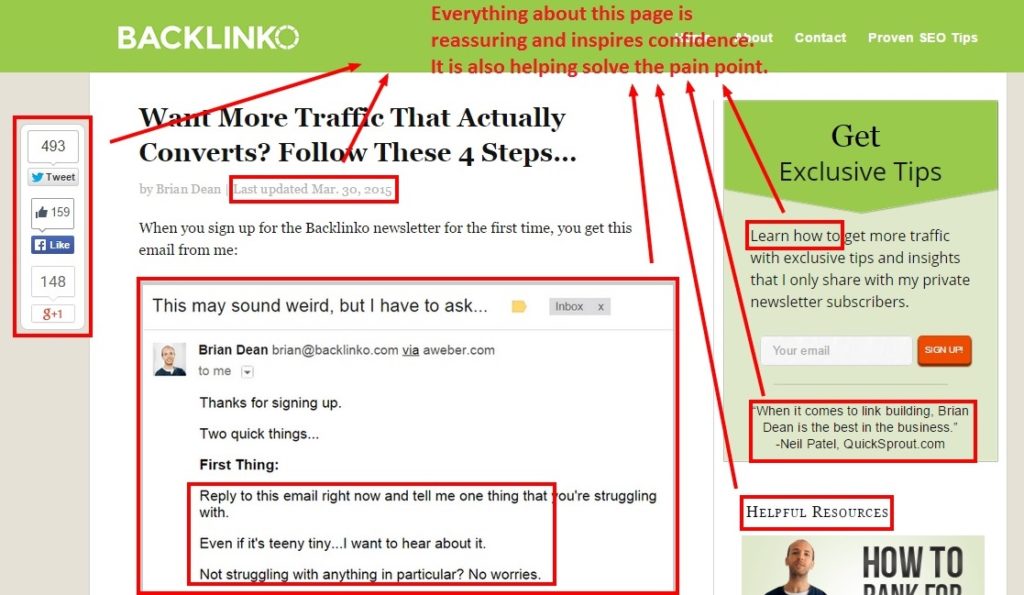
Your content strategy should be focused around keywords only. Why? I’ll explain via our own example.
Ranking for the keyword “PPC ad networks” has put us on the first rank on the Google SERP.
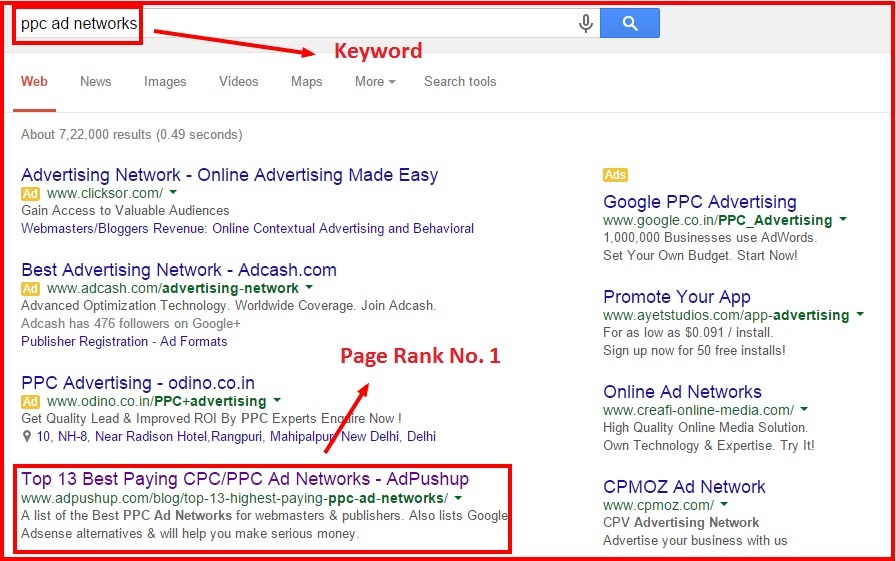
What has this done for our traffic?

This is the average organic traffic that we get from this post (the above is for the month of April 2015). And we wrote this back in March 2014.
The beautiful thing about keyword based posts is that their ROI will still keep on coming in even 2 or 3 years down the line.
3. Frequency of content
Lindsay Kolowich, Hubspot blog’s lead writer, shared this amazing research breaking down the frequency of publishing content. She found that companies that published 16+ blog posts per month got almost 3.5X more traffic than companies that published between 0 – 4 monthly posts.
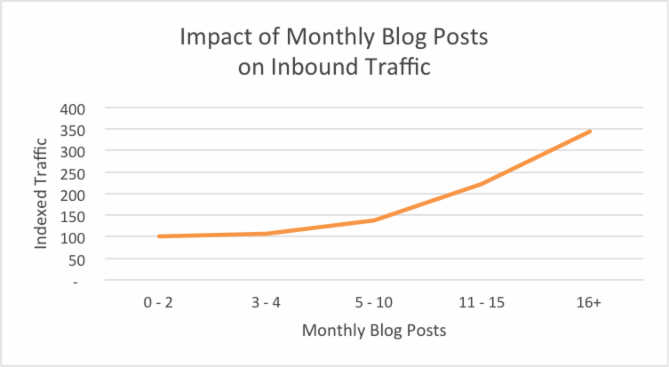
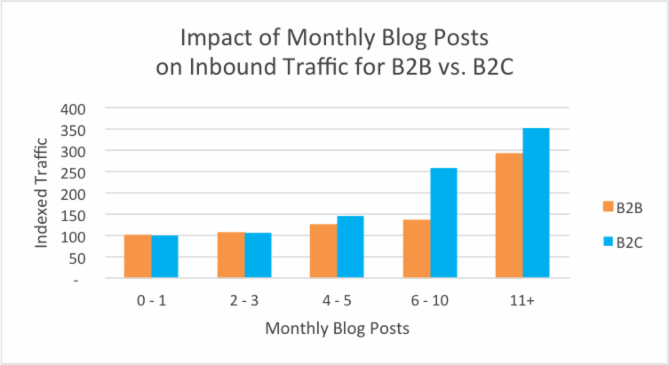
What is the main benefit of pushing out new content consistently?
Essentially, each time Google crawls your site, it monitors if there has been any changes. If there has, it makes a note, and remembers to come back a little sooner next time.If you’re a newspaper website that uploads new content almost constantly, you’ll probably get crawled every few hours. But if you never update your content, or only do very rarely, you’ll probably be crawled every few weeks. Which is bad news.
— Andrew Tobert (via Wordtracker)
Kristi Hines wrote a brilliant post on the KISSmetrics blog on How to Get Google to Index Your New Website & Blog Quickly. I recommend you give it a thorough read because she definitely knows what she’s talking about.
4. Increase session duration and decrease bounce rate
Why should you worry about session duration?

Because the longer visitors interact with your website, Google sees that as a positive sign that the search engine result from which the visitors originated is truly providing value. Therefore, this page is ranked higher than the others.
How to increase session duration?
> Massive Internal Linking, link back to your previous posts from the same website.
> Add ‘Related Posts’, if you’re using WordPress then I recommend the JetPack plugin for this feature. It’s working pretty well for us. > Add a ‘Popular Articles/Greatest Hits’ section, like QuickSprout Blog does.
> Add a ‘Popular Articles/Greatest Hits’ section, like QuickSprout Blog does.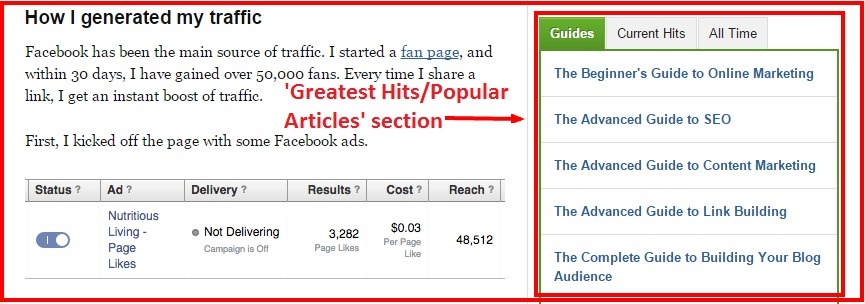 > Provide direction to your readers with the ‘Read Next’ label at the end of your posts, like TheNextWeb does.
> Provide direction to your readers with the ‘Read Next’ label at the end of your posts, like TheNextWeb does.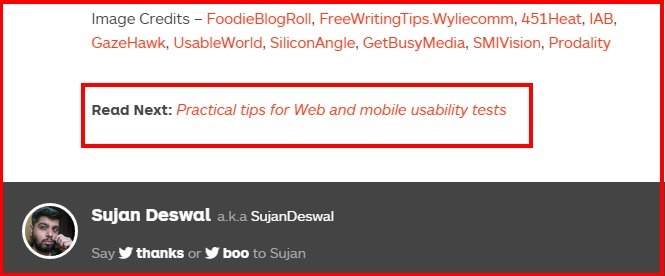
Why should I worry about bounce rate?

Because your visitors are not finding your content valuable or relevant to their search (which could also point at misguided keyword research on your part).
How to decrease bounce rate?
- Write valuable content (Refer to Point No.2 to see what ‘valuable content’ is).
- Perform correct keyword research. Here’s the best guide on how to do that, by Moz.
- Better UX & UI (quick navigation, easy to find and use search, content divided into sections, responsive design, less page load time).
5. Increase what is working and cut off what isn’t
I wont spend much time on this point because it’s pretty much a no brainer. However I will leave you with an insightful quote by SEO Expert Nick Eubank-
The core concept (of Pumpkin Hacking) is simple; focus resources on building what works. What this meant for us was paying attention to the search verticals and content that received the most traffic, most comments, most social shares, and being quick to cut the cord on traffic that didn’t perform.
— Nick Eubanks, I’m From The Future (via SEONick)
6. Make your posts and articles search engine optimized
There are three main ingredients to a successfully optimized web page or article: your meta title, description and keywords. This is such a simple thing to fill out when you’re publishing a piece of content on your site, so take the time to do it each time, and you’ll start to rank for your keywords much faster.
— Nathalie Lussier, Ambitionally (via Mashable)
You can do that by including the keyword that you are aiming into the following –
- Page URL
- Page Title
- Page Heading
- Within the body (content)
- Meta Description.
I’m using the Yoast SEO plugin on our WordPress blog to help optimize every post from the viewpoint of search engines. The plugin provides an SEO check list which should be completed in order to rank well on Google search results. Below are the SEO details for this article:
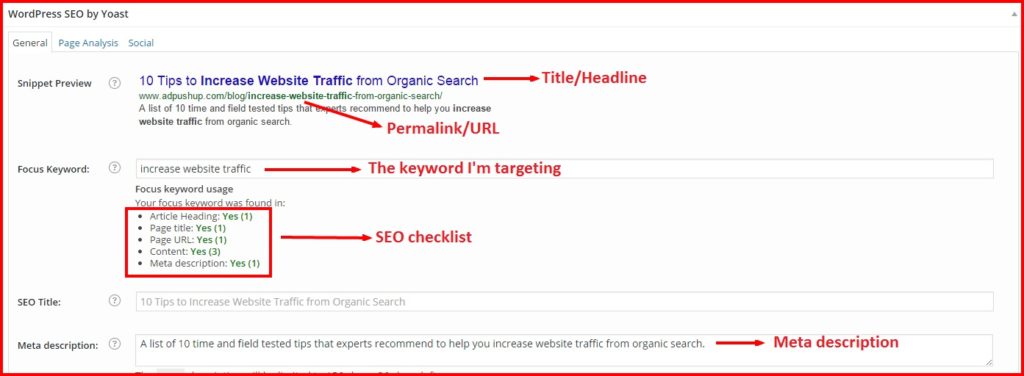
A word about word count — don’t worry about it. SERP IQ researched what is the optimal length of a blog post to sit well with search engines and it came down to 2000+ words.
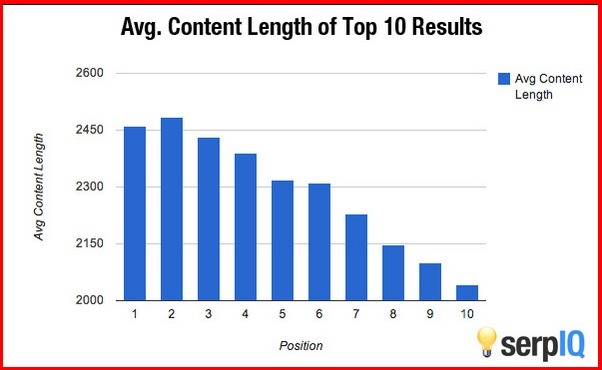
However this research was carried out way back in 2012 and most experts now agree that posts above 1600 words are considered eligible for the first rank.
Here’s Neil Patel answering a comment on his blog post:

7. Email marketing
Make your readers an offer they can’t refuse. Give them something of value (the most popular example is an eBook) in exchange for their email and their permission to be contacted. This way you can build an email list that you can use to promote your content in the future and create a hedge against any fluctuation in other traffic sources.
— Vishveshwar Jatain, via AdPushup
At AdPushup we use GetResponse as the email marketing software of our choice. Since its implementation in the beginning of January 2015, we’ve been able to amass 2.5x email subscribers than what we had in the beginning. We send a weekly newsletter that has an average unique open rate (the no. of people who opened the email once and not multiple times) of 22.17% and a click through rate (people who clicked on the blog links inside the email) of 4.84%, which has helped us build an army of loyal subscribers.
Here are the results of the newsletter we sent in the last week of April, 2015:
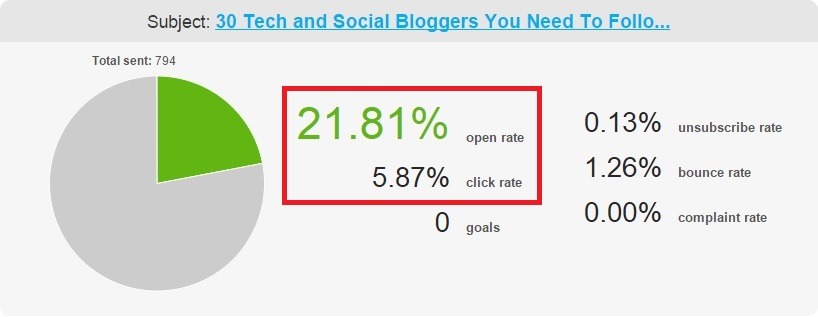
8. Distribution
Distribution means a greater outreach among the relevant audience which then results in higher shares/reactions. Once newly arrived visitors see the shares then, because of social proof and verifying the value of the content, those visitors stick around and therefore increase the overall session duration of the website. Once Google notices this, it automatically places your page above the competition because the algorithm learns that the page and its content are truly valuable and start ranking you for that keyword.
Here’s a flowchart to better help you understand this:
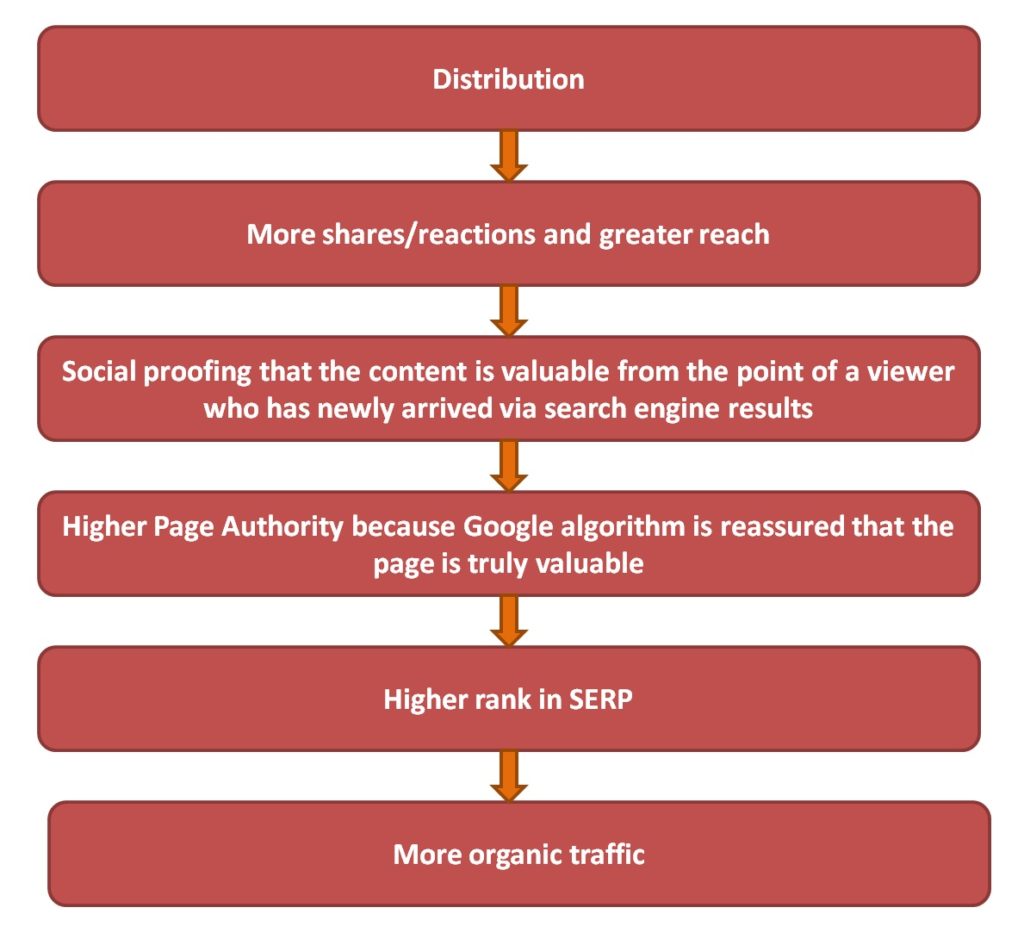
9. Backlinking
Backlinking entails websites with quality content linking out to your content as a valuable resource. Now this can either:
- Happen naturally (long term strategy; you become such an authority of quality and quantity that people regularly keep on linking out to your posts without you having to be pursue them)
- Or unnaturally (short term strategy; you reach out to industry authorities or customers and request them link your posts in theirs. You then use this short term strategy to step up the ladder and grow your own authority as a leader)
Note: Websites caught buying or selling links face severe penalties from both Google and Bing so I strongly recommend to take back-linking as a long term strategy which happens naturally.
How to get the right kind of back-links that do not suffer search engine penalties?
- Write valuable content mentioning industry leaders and then let them know about it. Create useful lists. Neil Patel naturally linked out to one of our posts in his blog post. Here’s the link to his article.

- Create viral content (be newsworthy). Basically, write about something that earns you back-links on its own. Independent bloggers and large publications will immediately pickup on such stories and link back to you if your content is valuable, thrilling or even entertaining.
- Build something of real value. If your blog is intelligent and informative then it will automatically encourage natural link building.
- If you have created something of value then reach out to your customers or search for influencers in your niche and request them to link back to you. I haven’t done this myself personally but I have been approached by people requesting back links to which I have gladly agreed because they wrote absolutely brilliant content.
- If you want the complete list of link-building tactics then I suggest you go through this and Google “Brian Dean”. Brian is the founder of BackLinko and he’s at the forefront of white hat (as well as black hat) link building.
Pratik Dholakia shares another popular link-building strategy –
(The Broken Link-Building Method) – Here’s another white-hat link-building strategy that can be quite effective. In this case, you’re actually helping publishers fix broken links, which can be helpful to their readers. However, this only works if your content is good enough to replace the lost content.
To do the broken link-building method, you must find broken links on a site that is relevant to your niche. You then contact the webmaster with the broken link and recommend your site as an alternative to the broken link. To find out more, you can read the broken link-building Bible at the Moz blog.
— Pratik Dholakiya, founder of Growfusely (via SearchEngineWatch.com)
10. Steer clear of unethical methods to increase website traffic
If you’re just starting out a new website, don’t get tempted to buy into cheap SEO services. If someone’s offering 100 backlinks for $5, then they’re more than likely going to get you spammy links that you will pay dearly for in the long run. Your best bet is to educate yourself on quality strategies or wait until you can afford someone who really knows what they are doing.
— Kristi Hines, Kikolani (via EffectiveInboundMarketing.com)
Bonus: 11. Give it time, don’t go too hard on yourself, play the long game
Just remember Alexandra Levit’s golden advice:
The longer you are in business and producing quality online content, the more likely you are to pop up in search results for all related keywords. Starting a blog or churning out a bunch of articles is all fine and good, but keeping those activities going for years as opposed to months (or weeks) makes a huge difference.
— Alexandra Levit, Inspiration at Work (via Mashable)
Do you think these are the only powerful techniques to increase website traffic from organic search or did I miss something critical? Share your knowledge in the comments below.
Image Courtesy: Moz.com, Nadia Orenes Ruiz's blog, Hubspot

Shubham is a digital marketer with rich experience working in the advertisement technology industry. He has vast experience in the programmatic industry, driving business strategy and scaling functions including but not limited to growth and marketing, Operations, process optimization, and Sales.






